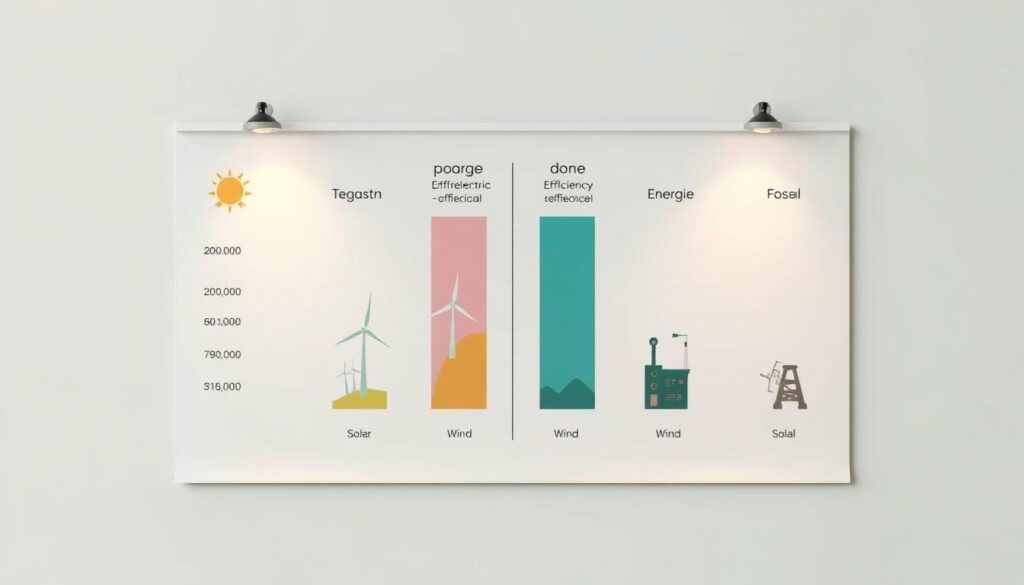Now Reading: Understanding Blockchain Consensus Mechanism Proof Stake
- 01
Understanding Blockchain Consensus Mechanism Proof Stake
Understanding Blockchain Consensus Mechanism Proof Stake

The digital currency world has undergone a remarkable transformation in how transactions get verified. Traditional methods relied on intensive computational work that consumed massive amounts of energy. A new approach has emerged that changes this dynamic entirely.
This innovative system selects transaction validators through a random process based on their cryptocurrency holdings. Instead of solving complex puzzles, participants lock up their digital assets as collateral. This creates a more sustainable and efficient network.
The shift represents a fundamental rethinking of decentralized network operations. Major platforms have adopted this model to address critical challenges like energy consumption and scalability. Understanding proof-of-stake protocols is essential for anyone involved in digital currencies today.
This method enhances security while making cryptocurrency technology more accessible. It represents a significant step forward in creating environmentally responsible digital ecosystems that can scale effectively.
Key Takeaways
- Proof-of-stake replaces energy-intensive mining with a validator selection system
- Validators are chosen based on the amount of cryptocurrency they hold and stake
- This approach dramatically reduces energy consumption compared to traditional methods
- Major blockchain networks have transitioned to this more sustainable model
- The system improves network security through economic incentives
- It addresses scalability issues that plagued earlier consensus methods
- Understanding this mechanism is crucial for cryptocurrency investors and developers
Introduction to Blockchain and Proof Stake
Distributed ledger systems have fundamentally changed how we establish trust in digital interactions. These networks operate without central control, allowing participants to verify transactions directly. The technology creates permanent records that cannot be altered retroactively.
Overview of Blockchain Technology
This innovative framework relies on multiple computers maintaining identical copies of transaction history. Each new entry links cryptographically to previous records, forming an unbreakable chain. The system’s design prevents single points of failure and unauthorized modifications.
Network participants collectively maintain integrity through distributed agreement protocols. This approach eliminates the need for traditional intermediaries like banks or payment processors. The result is a transparent system where all actions remain publicly verifiable.
The Rise of Consensus Mechanisms
Early digital networks used energy-intensive validation methods that limited scalability. Developers recognized the need for more sustainable approaches as technology matured. Newer systems prioritize efficiency while maintaining security against malicious actors.
The evolution from resource-heavy validation to modern alternatives represents significant progress. Current implementations balance environmental concerns with network performance requirements. This shift enables broader adoption across various industries and applications.
| Feature | Early Systems | Modern Networks |
|---|---|---|
| Energy Consumption | Extremely High | Significantly Reduced |
| Transaction Speed | Limited Capacity | Enhanced Scalability |
| Participation Requirements | Specialized Hardware | Digital Asset Ownership |
| Environmental Impact | Substantial Footprint | Sustainable Operation |
These improvements make digital currency technology more accessible to everyday users. The enhanced efficiency allows networks to process transactions faster while using fewer resources. This progression demonstrates the technology’s ongoing refinement toward practical real-world implementation.
Blockchain Consensus Mechanism Proof Stake: How It Works
Modern digital networks have developed a sophisticated approach to transaction validation. This system replaces traditional mining with a more efficient participation model.

The process begins when participants commit their digital assets to the network. This economic commitment serves as collateral for honest behavior.
Foundational Concepts of Proof Stake
Network participants become validators by locking up cryptocurrency holdings. The selection process favors those with larger economic stakes in the system.
Randomization ensures fair distribution of validation opportunities. This prevents any single entity from dominating the transaction confirmation process.
Validators must reach agreement on each block’s accuracy before permanent addition. Multiple confirmations provide enhanced security against fraudulent activity.
Key Differences from Proof of Work
The pos approach eliminates energy-intensive computational competitions. Instead of solving complex puzzles, validators simply maintain network connectivity.
This system dramatically reduces hardware requirements and electricity consumption. Participants can operate validation nodes using standard computer equipment.
The economic incentive structure encourages long-term network participation. Validators earn rewards for maintaining system integrity rather than computational power.
Step-by-Step Guide to Implementing Proof Stake
Entering the world of digital network validation demands proper wallet setup and security considerations. This practical guide walks you through the essential steps for safe participation.

Preparing Your Digital Wallet
Begin by selecting wallet software that supports staking functionality. Ensure compatibility with your chosen digital ledger system before transferring assets.
Different networks have varying minimum requirements for participation. While some platforms require substantial amounts like Ethereum’s 32 ETH, others accept smaller token quantities.
The connection process involves linking your wallet to a staking platform or directly to a network node. Follow the technical steps carefully to initiate the validation process.
Tips for Secure Staking
Always enable two-factor authentication and store backup phrases securely offline. Verify platform legitimacy before depositing any digital currency.
Research validator reputation and performance history thoroughly. Understand commission structures when delegating your staking rights to established operators.
Start with smaller amounts when learning the staking process. Gradually increase your participation as you become comfortable with the technology and security requirements.
Monitor your staking rewards regularly and understand any lock-up periods. Maintain wallet security through regular software updates and vigilance against phishing attempts.
Comparing Proof of Stake with Other Consensus Mechanisms
Digital networks employ various strategies for achieving agreement on transaction validity. These approaches have significant implications for sustainability and security. The two dominant systems represent fundamentally different philosophies.
Energy Consumption and Sustainability
Proof work systems require massive computational power to solve complex puzzles. This process, known as mining, consumes electricity comparable to small countries. Miners must invest in specialized hardware and pay substantial energy costs.
In contrast, pos networks eliminate energy-intensive mining competitions. Validators participate using standard computer equipment. A 2021 study found Bitcoin’s energy usage was about a thousand times higher than the highest-consuming pos system.
Security and Network Integrity
Pow security relies on the high cost of acquiring computational power. This creates economic barriers that protect against attacks. The system has a long track record of maintaining network integrity.
Pos networks implement slashing penalties that destroy validators’ stakes for malicious behavior. This creates strong economic disincentives. Both approaches provide robust security through different economic models.
For a comprehensive comparison of these consensus mechanisms, explore detailed technical analyses.
Technical Breakdown of the Proof Stake Validation Process
Transaction confirmation in contemporary systems relies on a carefully designed participation model. This approach ensures network security through economic incentives rather than computational power.
Role and Selection of Validators
Network participants become validators by committing digital assets to the system. These individuals verify transaction accuracy and propose new blocks for addition.
The selection process uses randomization weighted by stake amount. This prevents predictability and ensures fair distribution of validation opportunities.

Different implementations use various algorithms for choosing validators. Some consider coin age alongside token quantity when determining selection probability.
Multiple validators must confirm each block before finalization. This creates redundancy and prevents single points of failure.
Understanding Staking Requirements
Staking requirements vary significantly across different networks. These thresholds ensure validators have substantial economic commitment to network integrity.
The minimum stake amount serves multiple purposes. It prevents spam attacks while aligning participant incentives with system health.
Full validators operate complete nodes that continuously monitor network activity. Light validators participate through delegation mechanisms without running full infrastructure.
This technical framework creates robust security while maintaining network efficiency. The multi-validator confirmation process ensures transaction accuracy across all blocks.
Exploring Energy Efficiency and Environmental Impact
The energy debate surrounding digital networks has reached a pivotal moment. Traditional validation methods face increasing scrutiny for their environmental footprint. This has accelerated the adoption of more sustainable approaches.

Ethereum’s transition demonstrated the dramatic potential for improvement. The network achieved a 99.84% reduction in energy usage after implementing the new system. This change eliminated the need for power-intensive mining operations.
Reduced Energy Usage Compared to PoW
Traditional mining requires specialized hardware running continuously. These operations consume electricity comparable to entire countries. The competitive nature drives ever-increasing power demands.
In contrast, the alternative approach uses standard computer equipment. Validators participate without energy-intensive calculations. This fundamental difference creates massive efficiency gains.
| Aspect | Proof Work Systems | Alternative Approach |
|---|---|---|
| Hardware Requirements | Specialized Mining Rigs | Standard Computers |
| Energy Consumption | Country-Level Usage | Minimal Footprint |
| Operational Costs | High Electricity Bills | Low Overhead |
| Environmental Impact | Substantial Carbon Output | Negligible Emissions |
Long-Term Sustainability Benefits
The efficiency advantages position digital ledger technology for responsible growth. Networks can scale without creating unsustainable energy burdens. This addresses core environmental concerns while maintaining performance.
Regulatory attitudes are shifting in favor of efficient systems. European officials have called for banning energy-intensive models. The sustainable approach aligns with global climate objectives.
Lower operational costs make participation more accessible worldwide. Validators aren’t pressured to seek cheap electricity regardless of source. This creates a more distributed and environmentally conscious ecosystem.
Addressing Common Challenges in PoS Networks
While pos systems offer significant advantages, they face specific operational challenges that require attention. These hurdles impact both participation accessibility and network security.
High Entry Costs for Validators
Substantial staking requirements create barriers for individual participants. Ethereum’s 32 ETH threshold represents a significant financial commitment that limits validator diversity.
This high entry cost can lead to centralization concerns. Wealthy individuals or institutions may control large portions of staked cryptocurrency.
Solutions have emerged to address this challenge. Staking pools allow users to combine resources, while delegated systems enable participation through representatives.
Mitigation of Security Risks and Attacks
Early implementations faced unique vulnerabilities that required sophisticated solutions. Developers have strengthened protocols against various attack vectors.
Slashing mechanisms penalize malicious behavior by destroying portions of staked assets. This creates strong economic disincentives for validators considering harmful actions.
Network integrity remains protected through multiple security layers. Even theoretical attacks would require enormous financial resources with limited success probability.
| Attack Type | Vulnerability | Mitigation Strategy |
|---|---|---|
| 51% Attack | Controlling majority stake | Prohibitively expensive acquisition |
| Nothing-at-Stake | Validating multiple chains | Slashing penalties |
| Long-Range Attack | Rewriting history | Checkpointing systems |
Continuous improvements in blockchain consensus mechanisms address emerging threats. Major networks have demonstrated robust security through years of successful operation.
Practical Tips for Starting with Proof Stake on Leading Blockchains
Many people now earn passive income through participation in modern ledger systems. Choosing the right platform and approach is essential for success.
Evaluating Various Staking Platforms
Research different platforms before committing your digital assets. Look at validator reputation and historical performance metrics.
Consider commission rates and minimum requirements carefully. Some networks have higher entry thresholds than others.
Security measures should be your top priority. Verify platform legitimacy and understand reward calculation methods.
| Platform Type | Advantages | Considerations |
|---|---|---|
| Centralized Exchanges | User-friendly interface | Less control over assets |
| Decentralized Pools | Enhanced security | Technical knowledge needed |
| Liquid Staking | Maintains liquidity | Complex fee structures |
Delegating Stake Versus Running a Validator Node
Delegation allows smaller investors to participate effectively. You can stake any amount through established validators.
Running your own node requires technical expertise and significant capital. This approach offers maximum control but demands constant monitoring.
Most users find delegation more practical for earning rewards. It provides passive income without infrastructure management.
Diversify your stake across multiple validators to reduce risk. This strategy protects your investment from single points of failure.
Conclusion
The evolution of digital transaction verification has reached a critical milestone with sustainable consensus protocols. This approach represents a fundamental shift from energy-intensive methods to more efficient systems.
Major networks have successfully adopted this model, demonstrating that secure transaction processing can occur without massive energy consumption. The transition validates the viability of this method for global adoption.
Economic incentives align participant behavior with network health through collateral requirements. This creates robust security while maintaining system integrity across all transactions.
Participation remains accessible through delegation and staking pools. Users can earn rewards without specialized equipment or deep technical knowledge.
While challenges around entry costs and centralization persist, ongoing developments continue to refine these systems. The community actively works on solutions to improve decentralization.
Understanding this validation method is essential for anyone involved in digital assets. It powers the infrastructure supporting decentralized applications and represents the future of sustainable network operations.
FAQ
What is the primary advantage of Proof of Stake over Proof of Work?
The main benefit is significantly lower energy consumption. Unlike PoW, which requires powerful hardware and immense electricity to solve complex puzzles, PoS selects validators based on the amount of cryptocurrency they hold and are willing to “stake,” making it far more sustainable.
How does staking work for a regular user?
Users can participate by locking a certain amount of their coins in a supported digital wallet. This action often allows them to delegate their tokens to a validator node, earning rewards for helping to secure the network without needing to run the technical infrastructure themselves.
Is Proof of Stake as secure as Proof of Work?
While newer, PoS systems are designed with robust security. The economic incentive to act honestly—since validators risk losing their staked tokens for malicious behavior—is a strong deterrent. Networks like Ethereum have implemented sophisticated measures to maintain network integrity.
What are the risks involved in staking my tokens?
The primary risk is “slashing,” where a portion of your staked coins can be penalized if the validator you delegate to acts maliciously or goes offline frequently. There can also be lock-up periods where your assets are not immediately accessible for trading.
Can I become a validator on major networks like Ethereum?
Yes, but it often requires a substantial initial investment. For example, running an independent validator on the Ethereum network requires staking 32 ETH, which represents a high entry cost. Many users instead choose to stake through exchanges or pooling services with lower requirements.
How are new blocks created and transactions validated in a PoS system?
The network randomly selects a validator to propose the next block. Other validators then attest that the block is valid. This process of creating new blocks and verifying transactions is based on the size of each validator’s stake and other factors, replacing the computational competition of PoW.














